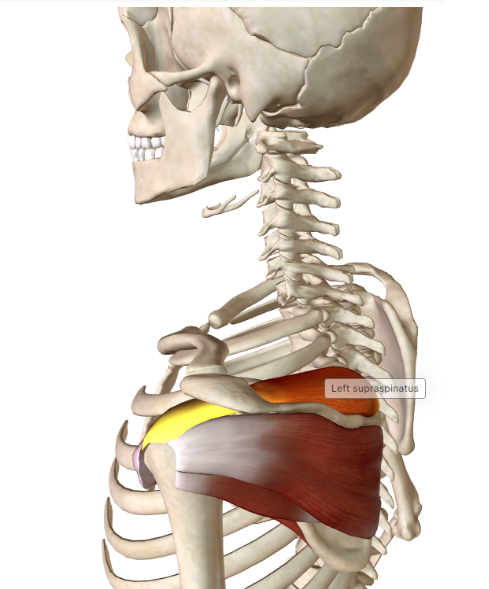Shoulder Instability

Best treatment for shoulder instability.
Shoulder instability can occur in several directions which means the best treatment option first requires an appropriate diagnosis regarding the direction of instability.
For anterior dislocations, or anterior instability, a surgical opinion may be sought if you dislocate your shoulder for the first time under the age of 30. This is because a high rate of recurrent dislocations can occur over the following years. In those older than 30 years of age, recurrent dislocations tend to be less common and conservative rehabilitation including shoulder strength and specific training for your functional tasks is commonly undertaken. More subtle subluxations or instability are often managed conservatively with strengthening exercises that progress you through all your daily needs.
Management of posterior dislocations typically includes a progressive strength and conditioning program of the shoulder prior to a surgical opinion. This strength and conditioning program typically occurs over several months.
If multidirectional instability is present, rehabilitation involves retraining the rotator cuff muscles and other muscles of the shoulder, as well as retraining the movement patterns of the scapular to improve shoulder strength and biomechanics.
Click here to view our self-assessment tool to see if you need to get your shoulder assessed.
Best exercises for shoulder instability.
The type of exercises you complete with shoulder instability will depend on how acute your injury is and whether you will be undergoing or recently have undergone surgery.
To ensure the best recovery, throughout your rehabilitation your exercises should involve working all your rotator cuff muscles in different angles.
Early rehabilitation exercises will involve having your elbow positioned close to the body and lighter resistance applied to your shoulder muscles as you move your shoulder over small ranges. As your rehabilitation progresses exercises need to progress into overhead positions, involve self-controlled stimulus as well as external stimuli that your body needs to reflexively adjust to.
If you are returning to sports, particularly contact sports, high speed motions of the shoulder and supporting structures of the shoulder need to be incorporated and ensuring you are effectively utilising your body biomechanics to generate power through your whole your body and into the shoulder is required.
Watch some of these exercises in the video below!
What is Shoulder Instability?
Shoulder instability is when the top of the humerus, the ‘ball’ component of the shoulder joint, moves excessively out of the shoulder blade socket.
This excessive movement can be of varying degree. If the top of the humerus moves completely out of the socket this is called a dislocation. If the humerus moves greater than its natural range however remains in contact with the socket it is called a subluxation.
Anterior instability is when the humerus is unstable or dislocates out the front of the joint, posterior instability is when the humerus moves excessively out the back of the joint and multidirectional instability occurs when the shoulder is unstable in multiple directions.
How do I know if I have Shoulder Instability?
If you have a traumatic onset of a shoulder dislocation, such as a hit to the shoulder, you will notice an immediate discomfort to the shoulder region and an inability to move it. You may feel the shoulder joint is sitting forwards or backwards of its normal resting position.
At times you may experiencing some pins and needles and pain down the arm as other structures such as muscles and nerves can also be stretched during a dislocation.
You may find the shoulder relocates to its normal position as you go to move again. Otherwise if the shoulder remains out of place a medical practitioner will need to assist you. This may be a GP, paramedic or other allied health professional that has been trained to relocate a shoulder dislocation.
Once the shoulder is back in its regular position you will feel an instant sense of relief however the shoulder region will still be sore.
What causes Shoulder Instability?
Shoulder instability can be due to either an acute traumatic incident or a long-standing issue.
Anterior and posterior instability commonly occur as a result of trauma. This trauma could be due to a high force contact to the shoulder or from a fall onto the arm or shoulder joint.
Multidirectional instability is often an atraumatic injury and can be associated with general hypermobility. There typically will not be a specific traumatic incident however smaller, less significant episodes of shoulder instability may have been occurring over several months.
How do I diagnose Shoulder Instability?
You will typically know if you suffer from a traumatic dislocation as you will feel the shoulder joint move out and back into place.
An X-ray may be requested to ensure no bone injuries occurred during the incident.
More subtle subluxations may be harder to diagnose yourself as you may notice a feeling of laxity around the shoulder however are able to do most of your daily activities without interference.
A physiotherapist will be able to perform several tests to assess the amount of laxity present at the shoulder and provide you with a confident diagnosis of your shoulder issue.
Related Shoulder Pain Blogs

How to sleep with a sore shoulder - link here
Why is my shoulder pain not going away - link here
How do you know it's serious - link here
Is exercise good for my pain? - link here
Should I stretch? - link here
